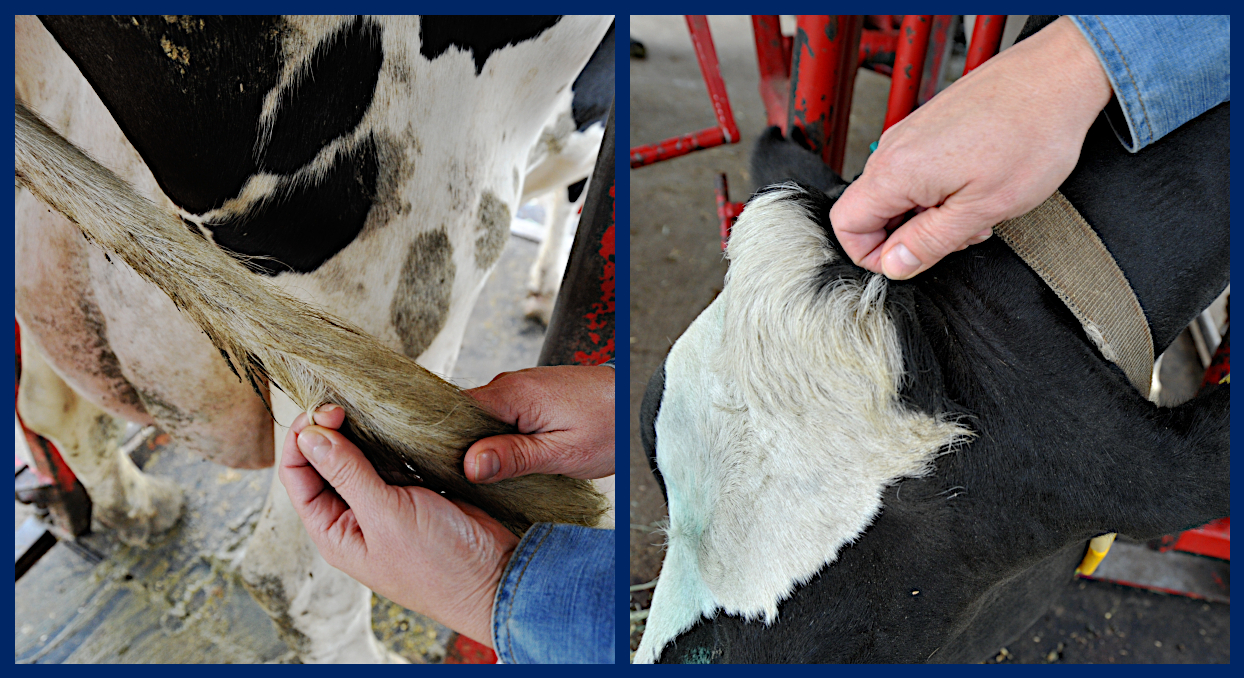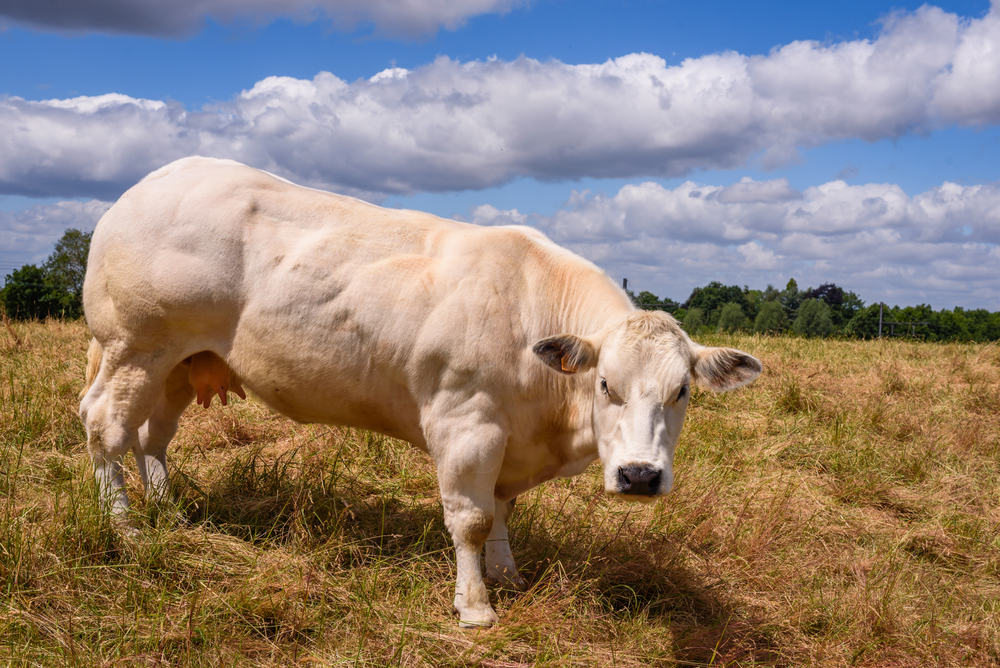Quick Summary
Click here for Price and Turnaround Time
Phenotype: Moderate to extreme increase in muscle mass resulting in higher meat yield
Mode of Inheritance: Autosomal recessive
Alleles: N = Normal, D = Double muscling (nt821 allele)
Breeds appropriate for testing: Belgian Blue and Belgian Blue crosses. The variant has also been detected in the following breeds: American Highland, Asturiana, Blonde d’ Aquitaine, Limousin, Parthenaise, South Devon, Santa Gertrudis, Braford, Murray Grey, and Angus.
Explanation of results:
• Cattle with N/N genotype will not have double muscling and cannot transmit this double muscling allele to their offspring.
• Cattle with N/D genotype are not expected to show signs of double muscling but are carriers of this allele. They may transmit this double muscling allele to 50% of their offspring. Matings between two carriers are predicted to produce 25% of offspring with double muscling.
• Cattle with D/D genotype will have double muscling.
Sample Collection
Most of the cattle DNA tests offered by the VGL are carried out using cells from the roots of a hair sample (roughly 20-40 hairs).
Hair samples should be taken from the switch of the tail, the poll, or the neck.

1. Clean (use comb if possible) tail switch, poll, or neck by removing all loose hair and foreign matter.
2. Use fingers or pliers to grasp approximately 8-10 hairs close to the skin and pull. Pull (do NOT cut) hair strands. Examine the end of hair strands for presence of root bulbs. Hair roots are necessary for DNA testing. If the majority of hair strands lack the root bulbs, discard hair and start again.
3. Repeat until you have approximately 20-40 hairs with root follicles attached.
4. Place the 20-40 hairs with root follicles attached in the envelope and seal with the animal’s ID written on the envelope. If hairs are long they can be taped to the submission form. Do not tape the roots.

5. Repeat steps 1-4 for each additional animal being sampled.
Note:
- Hair should be dry.
- If hair has excess dirt and debris, please brush out if possible before pulling hairs for sample.
- Do not cut the hair! The roots contain the DNA for testing.
- When sampling several animals in the same session, make sure that there are no hair strands in your hands to reduce the possibility of sample contamination. Clean hands and/or pliers if possible.

The myostatin protein is a critical regulator of skeletal muscle development. Genetic variants in the myostatin (MYO) gene that result in a defective and dysfunctional protein lead to muscle hypertrophy that is characteristic of the phenotype known as double muscling in cattle.
Several variants have been associated with double muscling in cattle. This test detects the nt821 allele (a deletion of 11 nucleotides in the coding DNA sequence at positions 821-831), which causes the double muscling phenotype characteristic of the Belgian Blue breed.
Double muscling is associated with positive traits of economic value, such as increased muscle mass, higher meat yield and higher proportion of expensive cuts of meat, as well as higher meat leanness and tenderness.
However, selection for double muscling caused by the nt821 allele has drawbacks that include increased susceptibility to dystocia, respiratory disease, lameness, muscle degeneration, and heat stress. Raising of double muscling cattle requires more specialized husbandry to realize the economic potential of the trait.
Double muscling is inherited as an autosomal recessive trait. This means that the phenotype occurs in males and females that have two copies of the double muscling variant.
The nt821 allele is present in Belgian Blue cattle and has also been identified in American Highland, Asturiana, Blonde d’ Aquitaine, Limousin, Parthenaise, South Devon, Santa Gertrudis, Braford, Murray Grey, and Angus lineages. Many cattle breeds have more than one double muscling allele.
Testing recommendations: Testing for Double Muscling helps breeders identify carriers among the breeding population and select for or against double muscling, depending on goals of breeding program. Breeding between two carriers has a 25% chance of producing offspring with double muscling and 50% chance of producing offspring that are carriers for double muscling.
